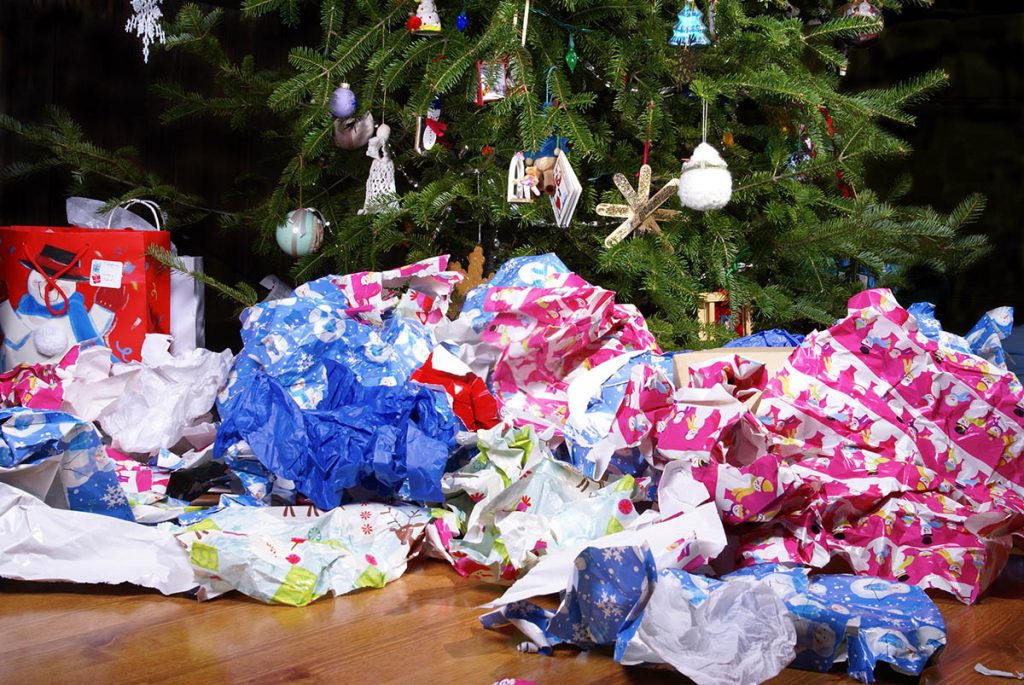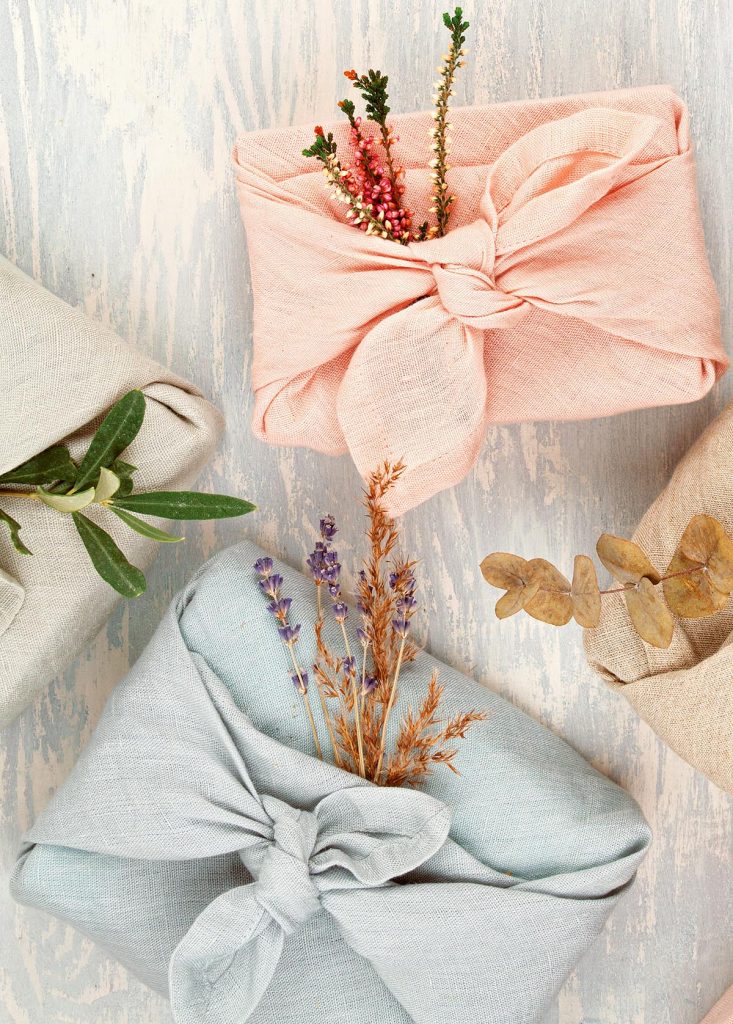Christmas or Consumerism?
What once began as a religious holiday and a jolly celebration of life has now become a season of spending, splurging and over-indulgence. How did it get this way?
Christmas is the annual Christian festival commemorating the birth of Jesus Christ, which is primarily observed on the 25th of December. It is celebrated all around the world in a whole manner of different ways but usually involving a gathering of family and friends and the sharing of a meal.
Whether honouring the religious aspect of the festivities or not, the season has traditionally been based around feelings of good-will, sharing, and cheer.
However, in more recent times, the festival has become much more focused on consuming. Be it heaps of presents piled under Christmas trees or tables overflowing with food to feed families for days, excess has become normal at this time of year.
It’s easy to say that Christmas these days is not what it once was. And this new, modern take of the holiday is pretty hard to avoid. It’s not surprising that with all of the advertising, influence from media and social pressure we end up consuming a lot around this time of year.
But of course, with a lot of consumption comes a lot of waste. You may be familiar with waste bins overflowing with wrapping paper or food bins stuffed with too much turkey. We must ask: How can we create a more sustainable Christmas? These shocking facts highlight the extent of Christmas waste here in the UK:
Christmas Waste Statistics (from the UK)
- Around 114,000 tonnes of plastic packaging will be thrown away and not recycled in the UK this Christmas
- Over 21 million people receive at least one unwanted gift each Christmas, and worse still, a small percentage of those (around 5%) will be “thrown away”.
- Well over four million Christmas dinners are thrown away every year – that’s equivalent to 263,000 turkeys, 7.5 million mince pies, 740,000 portions of Christmas pudding and 11.3 million roast potatoes.
- Approximately 100 million black bags full of packaging from toys and gifts are discarded each year. That’s not to mention the 1 billion Christmas cards that contain plastic and glitter that will go in the bin after Christmas.

Look familiar? How can we all make slight changes to reduce this waste?
So, we can safely say that Christmas has gotten a little bit out of hand and from an environmental perspective, the holiday season is a bit of a disaster. So again, how do we make changes that can result in a more sustainable Christmas?
Let’s think about it logically. For just one gift we use up valuable resources, we ship it around the world, we wrap it in non-recyclable paper, tie it up with a plastic ribbon all with the potential that it may not be well received and may simply be thrown away. And anyone working in waste management will tell you that there is no “away” when it comes to disposing of things.
But don’t despair, it’s not all doom and gloom this festive season. Here are some tips on how to have a more sustainable Christmas.

A different and more sustainable take on a holiday Christmas tree, from ÜNÜ.
Sustainable Christmas Ideas
- Ditch the presents completely. This might be hard to imagine but sometimes just being with loved ones or doing something nice can be a great gift.
- Consider rethinking your annual Christmas tree. Our friends at ÜNÜ create wonderful holiday trees from fallen wood, as pictured above.
- DIY. Good old mother nature can provide us with some wonderful Christmas decorations. From home-made forest wreaths to dried fruit decorations. Our new book, Living Without Plastic, has some wonderful ideas that can help you in this area.
- Plan accordingly. Make a Christmas meal that’s just enough for the people attending, or save the leftovers for the next day.
And what about all that plastic? Naturally, at Plastic Oceans, out attention veers towards all of the plastic waste that emerges during the holidays. If we are to stand any chance of fighting plastic pollution in the oceans, we must address our plastic consumption on land.
Did you know that wrapping paper contains a plastic lens that makes it non-recyclable? Then what with plastic decorations, plastic wrapped foods and plastic toys, it can be assumed that there is a lot more plastic waste generated at christmas time.
READ CHRISTINE WONG’S 6 TIPS FOR REDUCING YOUR PLASTIC WASTE FOR THE HOLIDAYS

Zero waste gift wrapping, as featured in Living Without Plastic.
How to Avoid Unnecessary Plastic at Christmas
- Get creative with your wrapping. Use a newspaper, brown recyclable paper or even a scarf to wrap gifts. If you have bags or paper from last year, reuse them. Again, Living Without Plastic offers some great ideas with this.
- Choose plastic-free presents. Or give a gift experience! Check out the Thoughtful Giving Guide from our friends at Plastic Pollution Coalition.
- Shop/Buy local. As our recent article said, Amazon generates over 465 million pounds of plastic packaging waste per year, and it’s estimated that up to 22 million pounds of that ends up in our water ecosystems. So skip the online ordering and support your local businesses.
- Avoid disposable cutlery and plates at your holiday gatherings. You might have a few extra pots to wash but it will save a lot of plastic waste.
- Rethink your greeting cards. Most are not recyclable because they are either splashed with plastic glitter or coated with a plastic film. Or both! Try buying eco-friendly cards or consider making your own.
Following any of those ideas can be a great place to start to begin to enjoy a more conscious and sustainable Christmas. Since there is typically so much excess it can be hard to make many changes at once, especially if people like to stick with traditions, but a little effort goes a long way.
Lydia Gaskell is the content creator for the European branch of Plastic Oceans. She joined the team recently to use her researching skills and passion for the environment to help the team with writing articles and blog posts, social media posts and getting stuck in to any other projects she can.

Trackback: ไก่ตัน
Trackback: toto slot
Trackback: car detailing
Trackback: สินเชื่อรถบรรทุก
Trackback: phuket diving
Trackback: ทำความรู้จักกับราคาบอลสูงต่ำ
Trackback: pgslot
Trackback: ทดลองเล่นสล็อต PG SLOT
Trackback: โคมไฟ
Trackback: promos
Trackback: Relax Gaming ผู้ให้บริการ iGaming ยักษ์ใหญ่
Trackback: spilleautomater nett